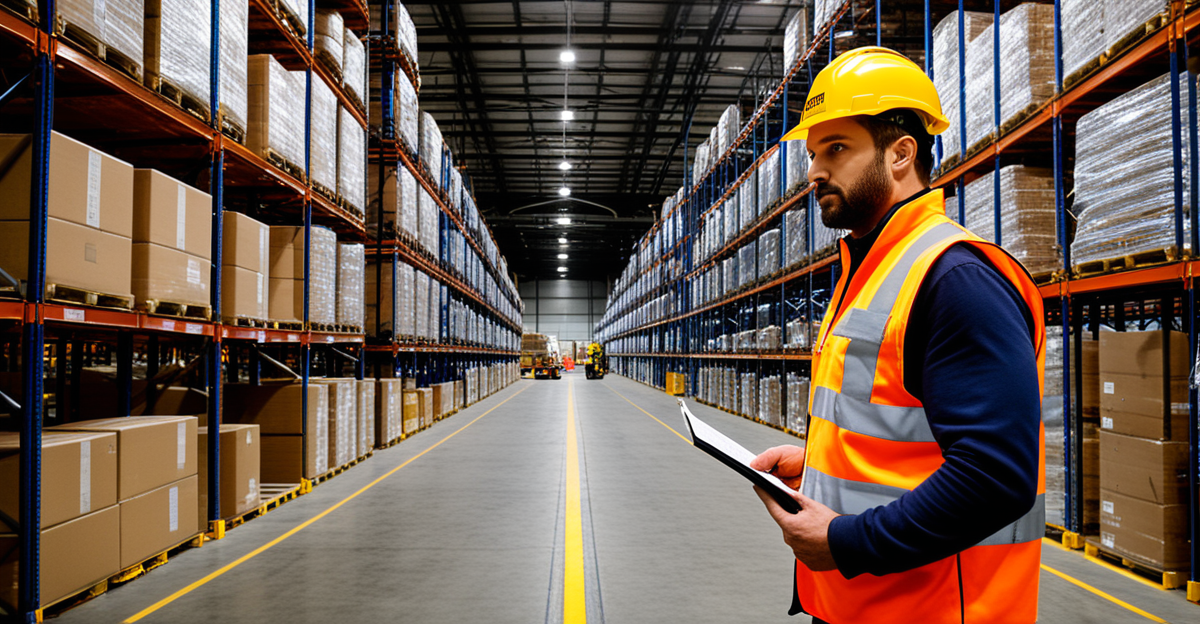Protecting warehouse assets and people requires more than caution—it demands the right equipment. Safety barriers, guardrails, and visibility aids not only prevent costly damage but also reduce accidents. Choosing and installing effective protection gear creates safer spaces that boost productivity and morale, turning potential hazards into well-managed risks every day.
Essential Warehouse Protection Equipment and Their Role in Safety and Accident Prevention
Each category of warehouse protection equipment plays a specific role in reducing risks and preventing injuries. Heavy-duty industrial safety barriers, like steel hoop and crash barriers, shield racking, machinery, and walls from forklift impacts, minimizing both business interruptions and repair bills. Pallet rack guards serve as highly visible buffers, alerting workers and preventing structural damage to essential storage frameworks.
Also read : Essential guide to asbestos surveys in essex for property owners
Safety mirrors—such as convex or panoramic types—eliminate blind spots and lower collision risks in busy aisles. High-visibility markings and retractable barriers separate foot and vehicle traffic, maintaining clear walkways and protecting pedestrians in dynamic zones. Employee safety gear for warehouses, from hard hats to reinforced footwear, offers direct protection against falling objects and daily hazards.
Strict compliance with health and safety standards, such as clear traffic demarcation and consistent PPE use, isn’t optional—it’s legally mandated for responsible operation. Evaluating equipment for easy installation, adaptability, and rapid deployment ensures every warehouse can implement robust risk management tailored to their workflow and regulatory obligations.
Also to read : Essential health and safety training options in hull
Types of Warehouse Safety Equipment and Best Uses
Physical Barriers and Protective Infrastructure
Warehouse safety solutions start with robust dock door safety equipment, collision prevention devices, and warehouse floor marking systems. Protective bollards for warehouses act as high-visibility shields against vehicle impacts near racking and loading zones, preventing structural damage and injuries. Advanced safety gate systems, along with aisle edge protection, create clear separation between moving equipment and workers, minimizing risks at busy intersections. Material handling protection solutions such as column guards, rack end protectors, and buffer rails absorb shocks from forklifts or pallet jacks, significantly reducing equipment damage prevention costs.
Warehouse floor marking systems are crucial for organizing traffic flow and segregating pedestrian walkways, especially in dynamic environments with frequent inventory movement. Collision prevention devices—including impact-resistant barriers and automated sensor systems—further avoid forklift impact protection issues and restrict unauthorized access to vulnerable storage area protection sections. Deploying these physical measures ensures not only compliance with warehouse safety audits and accident prevention in warehouses, but also optimizes daily safety and operational efficiency for all employees. Regular rack damage inspections and customized safety installations bolster these efforts, reinforcing a proactive warehouse operational safety culture.
Technology and Innovation in Modern Warehouse Safety
Modern warehouses increasingly rely on automated safety sensors and warehouse security cameras for real-time protection. Precision in accident prevention is achieved by integrating automated hazard detection—systems that immediately pinpoint and alert staff to risks such as intrusions, spills, or equipment malfunctions. These automated hazard detection protocols can rapidly distinguish between routine operations and genuine threats, safeguarding employees and assets.
AI-powered safety systems unify warehouse safety technology innovations under a central management platform. By utilizing advanced analytics, these platforms interpret the constant flow of data from automated safety sensors, triggering alerts only when true hazards are detected rather than standard motion or noise. Warehouse security cameras equipped with artificial intelligence can identify unusual movements and unauthorized access, sending real-time messages to managers.
Emerging warehouse safety technology innovations, such as biometric access, real-time alerting, and predictive risk mitigation, are transforming operational protocols. Biometric controls limit access to sensitive storage zones, ensuring that only authorized staff can enter specific areas. Predictive algorithms use data from warehouse security cameras and automated safety sensors to anticipate likely accidents and suggest proactive adjustments—effectively lowering risk before incidents occur.
This evolution toward automated hazard detection and advanced surveillance is helping organizations maintain a safer, more responsive, and compliant warehouse environment.











